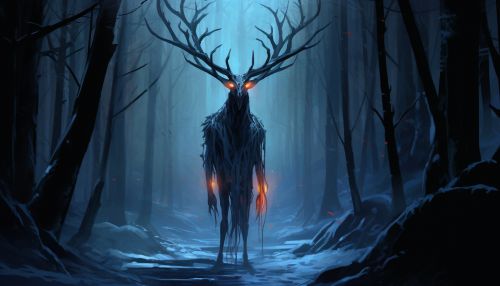What is a Wendigo
Origins and Mythology
The Wendigo is a mythological creature or evil spirit from the folklore of the First Nations Algonquin tribes based in the northern forests of Nova Scotia, the East Coast of Canada, and Great Lakes Region of Canada and United States. The creature is often said to be a malevolent spirit, sometimes depicted as a creature with human-like characteristics, which could possess humans and cause them to become murderers. The Wendigo is often associated with the winter, the north, and coldness, as well as with famine and starvation.


In Algonquin legends, the Wendigo is created whenever a human resorts to cannibalism to survive. In these cultures, cannibalism, even to save one's own life, is a cultural taboo. The act is seen as a corruption of the human spirit, and the human who commits it is at risk of becoming a Wendigo. Thus, the myth served as a method of encouraging cooperation and discouraging selfishness.
Physical Description
Descriptions of the Wendigo vary across different cultures and stories. However, common to most of these descriptions is the Wendigo's gaunt, skeletal appearance. It is often described as being incredibly thin, with its skin stretched tightly over its bones. The creature's eyes are said to be pushed back deep into their sockets. The Wendigo is often depicted as having long, yellowed fangs and long, terrible claws. Some depictions of the Wendigo give it antlers or horns.
Cultural Significance
The Wendigo legend was prevalent in the northern United States, northern Minnesota, and Canada, and particularly among the Algonquin-speaking tribes. These include the Ojibwe, the Saulteaux, the Cree, the Naskapi, and the Innu people. Among these peoples, the Wendigo is seen as a harbinger of death and a warning against taboo behaviors like selfishness and cannibalism.
The Wendigo myth thus served a dual function: it reinforced community and cultural values, and it also acted as a form of social control. It was a reminder of the consequences of allowing personal desires to overcome communal needs.
Wendigo in Popular Culture
The Wendigo has been adapted into many forms of media in modern times. It is a common antagonist in horror and fantasy literature, and has inspired numerous books, films, and video games. Some popular examples include Stephen King's novel Pet Sematary, the video game Until Dawn, and the TV series Supernatural and Hannibal.
